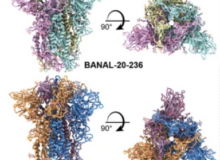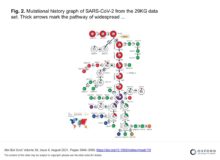by Pat Dutt and Jonathan Latham, PhD
New scientific research has cast grave doubt on the safety testing of hundreds of thousands of consumer products, food additives and industrial chemicals.
Everyday products, from soft drinks and baby foods, to paints, gardening products, cosmetics and shampoos, contain numerous synthetic chemicals as preservatives, dyes, active ingredients, or as contaminants. Official assurances of the safety of these chemicals are based largely on animal experiments that use rabbits, mice, rats and dogs. But new results from a consortium of researchers and published in the Proceedings of the National Academy of Sciences suggest such assurances may be worthless (Seok et al. 2013).
The results of these experiments challenge the longstanding scientific presumption holding that animal experiments are of direct relevance to humans. For that reason they potentially invalidate the entire body of safety information that has been built up to distinguish safe chemicals from unsafe ones. The new results arise from basic medical research, which itself rests heavily on the idea that treatments can be developed in animals and transferred to humans.

The research originated when investigators noted that in their medical specialism of inflammatory disease (which includes diabetes, asthma and arthritis), drugs developed using mice have to date had a 100% failure rate in almost 150 clinical trials on humans.
According to Kristie Sullivan, Director of Regulatory Testing Issues at the Physicians Committee for Responsible Medicine (PCRM), this is not unusual “about 90% of all pharmaceuticals tested for safety in animals fail to reach the market, or are quickly pulled from the market”.
Wanting to understand why this might be so, the consortium decided to test the effects of various treatments that lead to inflammation, and systematically compare results between mice and humans. This postulated correlation across different animal species is sometimes known as the concordance assumption.
In a first set of experiments the researchers looked at acute inflammation in mice brought on by various stimuli. These stimuli were bacterial toxins (endotoxaemia), trauma, and burns. To measure responses the authors quantified positive or negative changes in gene activity for thousands of individual genes. The researchers found that changes in activity of a particular mouse gene after treatment typically failed to predict changes in activity in the closest related human gene. This was not the expected result. If humans and mice are meaningfully similar (i.e. concordant) then gene activity changes in mice should have closely resembled those in humans after a similar challenge. But they did not.
In further experiments, the researchers identified another difference. While humans responded with similar patterns of gene changes to each of the three different challenges (trauma, burns, and endotoxaemia), mice did not. The three treatments in mice each resulted in a distinct set of gene activity changes. This confirmed the initial results in the sense that mice and humans responded differently. It also implied that the differences in gene response between mice and humans are attributable not so much to a lot of detailed ‘noise’ but to fundamental differences in the physiology of mice and humans in dealing with these challenges.
Next, the researchers examined the activity of specific biological signaling pathways after similar treatments. These too were highly divergent between mice and humans. Surprised by the consistently poor correlations between the two species, the authors then tested other human/mouse models of inflammatory diseases. Again, the similarity between mice and humans was low.
In summary, repeated experiments confirmed that, when it comes to inflammation, mice and humans have little in common, a finding important enough in itself given the prevalence of inflammation-related diseases in humans. These include allergies, celiac disease, asthma, rheumatoid arthritis, and autoimmune diseases.
Perhaps these results should not be a surprise. Concordance has been questioned by numerous researchers, some of whom have noted that mice are separated from humans by 120 million years of evolutionary change (Stoloff 1992; Greek and Swingle Greek, 2003; Mestas and Hughes, 2004; Knight, 2007). And, unlike humans, mice also suffer from different diseases, lack a gall bladder, have no menstrual cycle, have multiple births, differ in immune systems, lifespan and size, to name only a few dissimilarities.
Thus the Seok study is not the first to conclude that mice are poor models for human disease, but it is notable for being by far the most comprehensive. Combined with results of previous experiments, its conclusions suggest researchers should expect that mouse, and probably other animal testing, is of little use in advancing the treatment of human illnesses, including heart disease and cancer.
In other words, the public is probably being badly served by much of the money spent on medical research. According to PCRM’s Kristie Sullivan, “the National Institutes of Health is giving researchers billions of dollars every year for research on animals”. While missing out on potential cures, the public is also likely being exposed to dangerous or ineffective pharmaceuticals. Animal testing nearly prevented the approval of valuable drugs such as penicillin and subsequent antibiotics, but it did not prevent the thalidomide disaster of the 50s and 60s (Greek and Swingle Greek, 2003).
This finding of non-concordance need not mean the end of medical research. It could even herald a more promising and scientific era. Sullivan believes that medical researchers “simply take for granted that animal models are useful” even though other, and possibly better, techniques for studying human disease are available. These include greater emphasis on human clinical observation and making better use of cell cultures for research.
But wasteful and unproductive medical research is arguably a sideshow besides the misplaced confidence in the safety testing of environmental and household chemicals. While medical failures affect the unwell, chemical toxins have potential repercussions for everyone.
If animals are not useful predictors of important disease responses in humans it is unlikely they are useful as test subjects for toxicological safety. In other words, lack of concordance means that the synthetic chemicals that are found in industrial products, incorporated into food, and otherwise spread throughout the environment, are essentially untested. The regulatory process through which they passed was never a scientifically validated and evidence-based system, but now the evidence shows it to have been functioning as a system of random elimination. “We are not protecting humans” says Kristie Sullivan, noting that “even a National Academy study agrees that many toxicological tests are not human-relevant.”
There are potential alternative toxicological tests, but despite multi-billion dollar grants, and even a human on a chip, the science is still incomplete. Michael Hansen, Senior Scientist at the Consumers Union, has been contributing to recent discussions over replacing animals for the purposes of regulatory toxicology. He acknowledges that “we should be moving towards in-vitro cell-based models” for chemical risk assessments. But how this can be done is not yet clear. Hansen points out that not only is “there a technical problem of how to incorporate them into an overall risk assessment”, but also that “in-vitro alternatives have yet to be validated”. Nevertheless, he still believes specific uses for animal research remain: “for carcinogenicity, for example, mice are appropriate models”.
An interesting question, when an estimated 100 million mice are sacrificed each year for medical research and in toxicology, is why it took so long to test this fundamental assumption. The answer is that it has been tested before, though not nearly as rigorously as it could have been. And the results have, in the view of many, not supported the idea that animals reliably model human physiology (Knight, 2007; Dressman, 2007).
A different kind of answer is that animal research is now big business. One genetically engineered mouse can cost $100,000 while a mouse treadmill can set taxpayers back $9,600 (Greek and Swingle Greek, 2003). For medical researchers, animal research offers a steady income and a successful career pathway regardless of whether, as in the field of inflammation, experiments deliver practical benefits to patients. These are just some of the entrenched interests maintaining the animal testing system. Other prominent beneficiaries include the food and chemical industries which profit from the public perception of safety derived from animal testing.
Going back to the time of ancient Greece, we have used animals to teach us about the human body; however, it was not until 1937 — after 100 people died from taking Elixir Sulfanilamide — that Congress mandated drug safety testing on animals. Since then, literally billions of mice and other mammals have been sacrificed in a Faustian bargain—that their suffering was preventing human experimentation. Seemingly, that calculation was misguided from the start.
The failure of animal experiments to predict human responses and the inability of alternatives to replace them leaves few options. Individuals can to a limited extent protect themselves through avoiding packaged, processed and non-organic food and buying goods made from traditional materials. But ultimately, chemical exposure and chemical pollution are a collective responsibility.
References
Dressman HK et al, 2007. Gene expression signatures that predict radiation exposure in mice and humans. PLoS Med 4:4.
Greek CR, Swingle Greek, J (2003). Specious science: Why Experiments on Animals Harm Humans. The Continuum International Publishing Group, Ltd, London.
Knight A (2007) Systematic reviews of animal experiments demonstrate poor human clinical and toxicological utility. ATLA 35: 641-659.
Mestas, J and Hughes, CCW, (2004) Of mice and not men: differences between mouse and human immunology, The Journal of Immunology, 172: 5.
Seok, J Shaw Warren, H et al, (2013) Genomic responses in mouse models poorly mimic human inflammatory diseases. PNAS February 11, 2013 online edition.
Stoloff L (1992) An analysis of the 1987 list of IARC-identified human carcinogens and the correlated animal studies. Regulatory Toxicology and Pharmacology 15: 10–13
Postscript (added May 8th)
Readers may find it useful to get an idea of the prior debate over concordance. Below are some of the scientific papers that have debated concordance. We covered this paper (Seok et al. 2013) because we believe it exemplifies a pattern and not so much because it is new.
David Horrobin (2003) Modern biomedical research: an internally self-consistent universe with little contact with medical reality? Nat Rev Drug Discov. 2: 151-4.
P Pound, S Ebrahim, P Sandercock et al. (2004) Where is the evidence that animal research benefits humans? BMJ. 328: 514–517.
A good place to gain access to this literature is at http://www.afma-curedisease.org/



